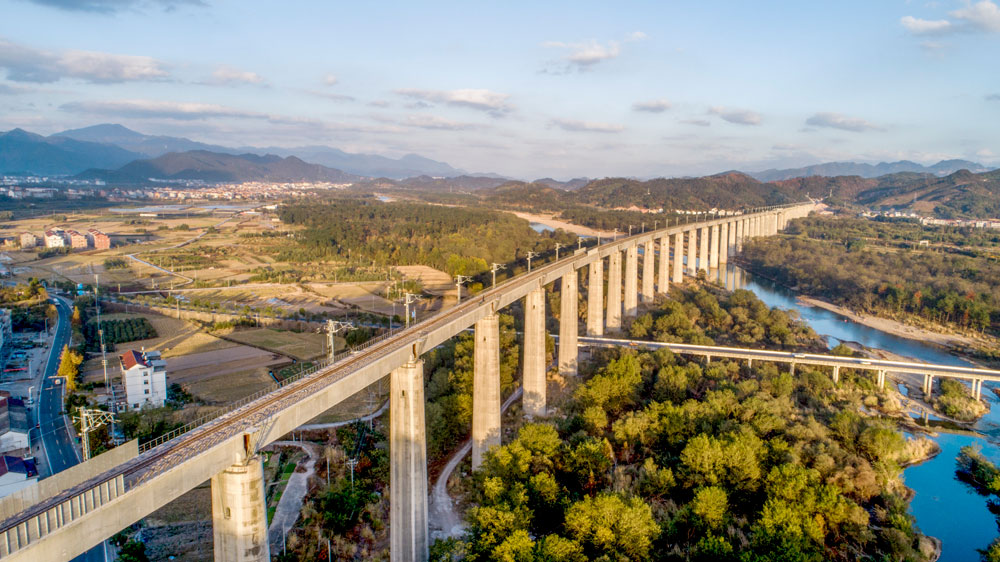Sustainable Transportation Development with Chinese Characteristics

(Photo source: Guangming Picture)
Transportation is vital for driving a nation's sustainable development. On December 22, the State Council Information Office issued the white paper "The Sustainable Development of Chinese Transportation", which summarized the development of Chinese transportation in the contemporary age from the perspectives of development targets, positioning, philosophy, and motivation.
On December 5, 1980, the United Nations passed the "International Development Strategy for the Third United Nations Development Decade", which proposed the concept of sustainable development in the economic, social, and environmental dimensions. China's sustainable development ideals blend well with the core principles of United Nations' sustainable development philosophy. As early as 1996, sustainable development had become a national strategy in China and been comprehensively implemented. China is thus one of the first countries to propose a strategy of sustainable development.
In the domain of transportation, sustainable development targets include economic, environment, and social benefits. To ensure the coordinated development of transportation and socio-economic progress and natural ecology, to save energy and to be environment-friendly, we need to do well in the following aspects.
1. Innovation. Reform and innovation have released the vitality of technology and the market, this improved governance efficiency and facilitated quality development. Through unremitting efforts, China's transportation technologies have come through a stage of catching up with global industry leaders, are now running side by side with them, and even leading the global race in some areas.
2. Coordination. Transportation infrastructure construction has accomplished the leap "from a line to a region" and formulated "a basic network", displaying increasing capacity to support the country’s socio-economic development, the capability, quality and efficiency of transportation services have seen remarkable improvements.
3. Greenness. The Chinese government insists on ecology first and green development. Ecological civilization construction is given a prominent position in proposing the ideas of respecting and protecting nature, and gradually improve the degree of environment-friendliness. The Chinese government aims to perfect transportation policy-making from the perspective of ecological civilization, enhance institutional guarantee for green transportation development, and to upgrade green governance abilities.
4. Inclusive development. Transportation is an important welfare service. In some poverty-stricken areas, building one stretch of highway may suffice to help local residents open the door to overcoming poverty and achieving prosperity. Transportation is used as a poverty alleviation tool for building a moderately prosperous society, modernizing agriculture and rural areas, eliminating bottlenecks impeding rural transportation development, and for providing support to farmers’ pursuit of prosperity.
5. Safety. The Chinese government follows a people-first principle, where safety is always a priority. It is bent on capacity building for safety governance and guarantee, improving transport safety mechanisms and emergency response systems, in order to prevent and resolve major safety risks in a timely manner, and to effectively respond to various disasters and accidents.
6. Openness. The Chinese government insists on a strategy of openness featuring mutual benefits and win-win cooperation, actively promoting global inter-connectivity, and actively participating in global transport governance.
The Fifth Plenary Session of the 19th CPC Central Committee made specific arrangements and requirements for accelerating the process of becoming a country with a strong transportation network. Chinese transportation will continue to be people-centered in its developmental thinking, and it will create top-notch equipment, technology, management and service to facilitate the realization of socialist modernization.
Contributed by Ouyang Bin, Director of Transportation Research Center, China Academy of Transportation Sciences; Feng Zhenhua, Director of Green Transportation Research Office of Transportation Research Center, China Academy of Transportation Sciences
Translated by Zhang Junye
[ Editor: Zhang Zhou ]




More From Guangming Online
Medics from Fujian leave for Shanghai to aid in battle against COVID-19 resurgence
New int'l land-sea transport service to Indo-China Peninsula launched
Another makeshift hospital under construction in Shanghai
Tourists view tulips in Suiping County, Henan
In pics: blooming gagea flowers on grassland in Zhaosu, Xinjiang
Greek workers stage 24-hour general strike over high prices